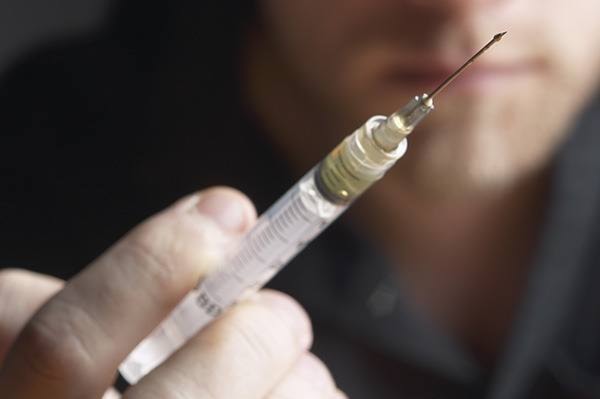An Island Health medical health officer hopes the public health emergency declared across B.C. today can launch a serious discussion about safe consumption sites on Vancouver Island.
The province declared an unprecedented state of emergency this morning in response to an epidemic of drug-related deaths so far this year.
Victoria and Nanaimo are ground zero on the Island, which has added more than 40 people to a 2016 provincial body count that is on pace to obliterate last year's total of 474 overdose deaths by more than 300 people.
Vancouver Island medical health officer Dr. Paul Hasselback said the death rate is evidence of how communities need to consider places where people can inject, inhale or swallow drugs with the supervision of a health professional.
“I think the most important thing it does is that it helps highlight the severity of the situation,” Hasselback said. “This is an unusual circumstance. This will legitimize it. We can’t have an emergency and not do anything different.”
Hasselback first publicly brought up the issue of safe consumption sites last month in an interview with the Nanaimo News Bulletin. It followed on the heels of a Canadian Press story in February that Island Health had started talks with Victoria city officials and police about supervised injection sites there.
Provincial health officer Dr. Perry Kendall declared the public health emergency today to allow medical health officers to collect real-time information on overdoses in order to identify immediately where risks are arising and be proactive in warning and protecting people who use drugs.
"The recent surge in overdoses is a huge concern for us," Health Minister Terry Lake said in a media release. "We have to do what's needed to prevent overdoses and deaths, and what's needed is real-time information. Medical health officers need immediate access to what's happening and where so they can deploy the necessary strategies to prevent these tragedies."
Currently, information on overdoses is only reported if someone dies. The emergency declaration should increase access to the information and accelerate the speed with which it is shared.
Hasselback said the changes are not about compromising people’s privacy. They are about saving lives.
"Health authorities have consistently asked for more data that will help inform responses and prevent future overdoses," Kendall said. "This is the first step in making that happen.
"Over the next few weeks, I'll work with medical health officers, health authorities, emergency room staff, paramedics and other first responders and the BC Coroners Service to determine how best to collect and share the data."
The ministry expects the data to help prevent future overdoses and deaths by better targeting outreach, bad drug warnings, awareness campaigns and distribution of naloxone training and kits, the release states. It will help health care workers connect with vulnerable communities and provide take-home naloxone to the people who need it.
On the Island, the epidemic is concentrated in its two biggest population centres. According to Hasselback, in just three months, Nanaimo already is just one death shy of its three-year annual average of 17.
“We have seen some in other communities, but the vast majority are in greater Victoria and the Nanaimo region,” he said.
A total of 76 deaths in B.C. January was the largest number of deaths in a single month since at least 2007.
Many of the deaths are linked to the synthetic drug fentanyl, which is increasingly being unknowingly ingested by users after being cut into other drugs like cocaine and heroin.
Naloxone — used to reverse overdoses involving opioids like fentanyl — is now available without a prescription at a number of locations in many Vancouver Island communities. Check towardtheheart.com for one nearest you.
Hasselback said communities have to understand the gravity of the situation and realize that every harm reduction option needs to be part of the discussion.
“How do we maximize our ability to respond?”
Follow me on Twitter @JohnMcKinleyBP



